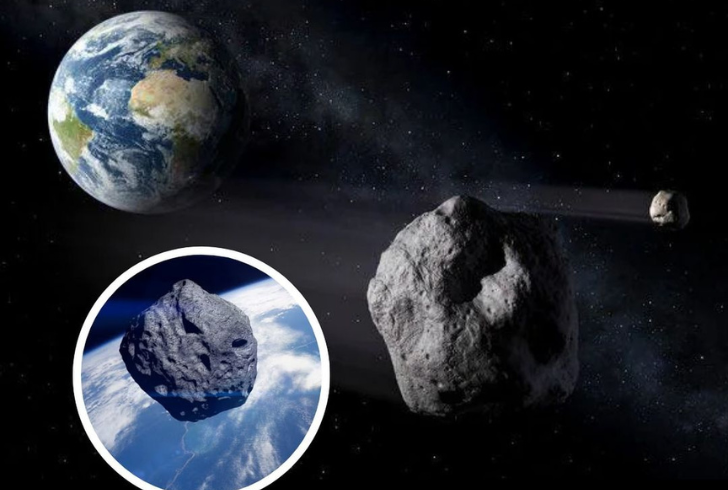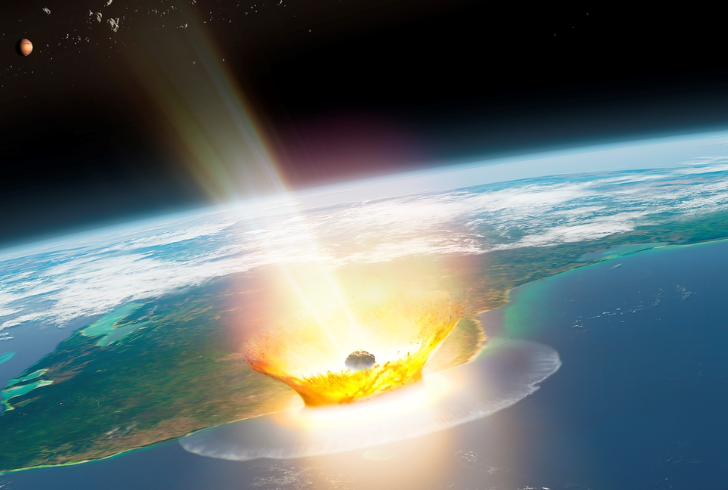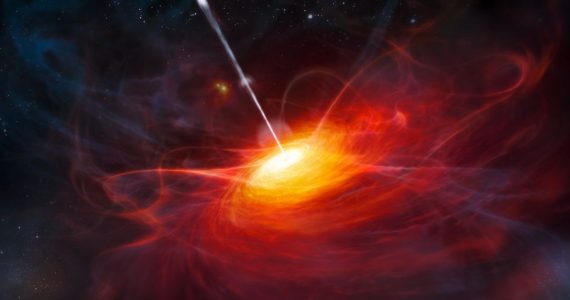Around three billion years ago, the Earth was rocked by one of the most powerful events in its history – the impact of the S2 meteorite. This colossal space rock, estimated to be 40-60 kilometers wide, was far larger than the asteroid responsible for the dinosaurs’ extinction and left a dramatic imprint on the young planet.
When S2 collided with Earth, it not only tore up the seafloor and caused tsunamis but also dramatically altered the atmosphere and oceans, setting the stage for life to flourish.
The Earth-Altering Impact of the S2 Meteorite

The S2 meteorite’s impact was nothing short of catastrophic. Upon impact, it carved out a 500-kilometer crater and sent rocks and debris flying into the atmosphere, creating a thick cloud that circled the globe. As molten fragments rained down, Earth’s surface was transformed, with coastlines flooded by an enormous tsunami that swept across the planet. Scientists have estimated that the heat generated from this impact could have caused ocean water to boil, evaporating significant amounts and heating the atmosphere by up to 100°C.
This colossal wave of energy and environmental disturbance left the planet shrouded in darkness. Dust and particles filled the air, blocking sunlight and threatening early life that depended on light for survival. For a period, Earth became a hostile environment, with life challenged at every turn.
Exploring the Ancient Impact Site in South Africa
Researchers, including Professor Nadja Drabon from Harvard University, ventured to the Eastern Barberton Greenstone Belt in South Africa, one of the world’s oldest and best-preserved geological formations. This area holds valuable remnants of the S2 meteorite impact, offering a rare glimpse into early Earth’s chaotic conditions.
Drabon and her team undertook multiple expeditions, traveling deep into remote areas where they meticulously collected rock samples. Protected by rangers against wildlife such as elephants and rhinos, the team searched for spherules—tiny fragments of rock created by the intense heat of the impact. These samples, painstakingly retrieved and later analyzed in laboratories, provided essential evidence of the meteorite’s effect on Earth’s surface and early environment.
A Violent Event That Nurtured Life
Surprisingly, the S2 meteorite’s impact wasn’t solely destructive; it may have catalyzed a resurgence of life. The intense collision churned up essential nutrients, including phosphorus and iron, dispersing them across Earth’s surface. As Drabon observed, “This event, rather than just being a destructive force, created favorable conditions for early life to bounce back and even thrive.”
In fact, it is now believed that this nutrient boost served as a form of “natural fertilization,” enriching Earth’s oceans and stimulating microbial activity. The massive tsunami that swept across the globe brought nutrient-rich water from deep ocean layers to the surface, creating a rich environment for early microorganisms. This distribution of essential minerals and nutrients likely provided a significant boost to simple, single-celled organisms, fostering growth in the aftermath of the devastation.
The Lasting Impact of the S2 Meteorite

The findings from Drabon’s team challenge previous perceptions of ancient meteorite impacts as purely destructive events. The S2 meteorite’s collision demonstrates that these impacts, while catastrophic, also played a crucial role in transforming Earth into a more habitable planet, rich in elements necessary for life. Such impacts may have even accelerated evolutionary processes, pushing life to adapt and grow stronger after each upheaval.
The research provides a broader understanding of how violent events in Earth’s history have contributed to shaping the conditions necessary for life. While these catastrophic impacts drastically altered Earth’s surface, they also created environments in which life could establish, adapt, and eventually diversify.
Insights from the S2 Meteorite’s Legacy
The legacy of the S2 meteorite illustrates the complex relationship between destruction and renewal. The violent impact that created such extreme conditions also became a turning point in Earth’s early history, ultimately aiding the planet’s transformation into a cradle for life. The findings underscore how Earth’s tumultuous early years, marked by meteorite strikes and environmental upheavals, laid down the building blocks that would allow life to flourish.
The research on the S2 meteorite, published in the “Proceedings of the National Academy of Sciences (PNAS),” provides a striking example of how our planet’s violent past shaped its capacity to nurture life.




